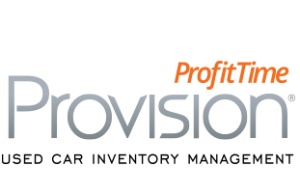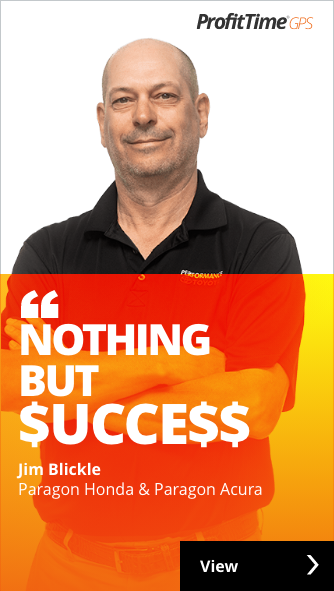A View of ProfitTime’s Utility in Today’s COVID-19 Pandemic
I’m seeing dealers take one of two paths as they work to right-size their used vehicle inventory costs and counts to fit current market conditions in the COVID-19 pandemic.
The first path might be called a fire sale approach. It’s where  dealers make dramatic price reductions to retail as many vehicles as they can, as quickly as possible, to generate cash. The price reductions are often standard in application and size across a dealer’s inventory. It’s an “everything must go now” mentality.
dealers make dramatic price reductions to retail as many vehicles as they can, as quickly as possible, to generate cash. The price reductions are often standard in application and size across a dealer’s inventory. It’s an “everything must go now” mentality.
Meanwhile, some dealers take a second path. It shares the same sense of urgency as the fire sale approach. But dealers on the second path don’t apply the same level of retail-now urgency to every vehicle. Rather, they discount cars based on each vehicle’s individualized investment value. If a vehicle represents a poor investment, it gets priced to retail right away. If a vehicle holds sizable investment value, its pricing reflects less urgency.
I’m highlighting this distinction because I believe the market has arrived at a time when the first approach, which seemed necessary and warranted in the darkest moments of doubt and uncertainty in recent weeks, seems to have run its course.
To be sure, current conditions remain a cause for concern. Retail used vehicle sales volumes have climbed back to about 80 percent of where they should be this time of year. That’s good news, given where volumes were a few short weeks ago. Meanwhile, many dealers are still carrying a disproportionate number of vehicles compared to current retail demand and sales volume. The dealers with the largest supply/demand imbalances are suffering the most from Inventory age and investment distress.
But these conditions do not justify what I’ve begun to see as I view dealer inventories through the lens of Provision ProfitTime.
Since the start of the pandemic, some dealers appear to have followed the fire sale approach and abandoned the discipline they’d previously shown to price vehicles based on their investment value.
For example, I’m seeing a return of the pricing inversion that spurred the development and introduction of ProfitTime in the first place: Dealers are pricing their best investments, which ProfitTime labels as Platinum and Gold vehicles, at lower Price to Market percentages than their worst investments, the Silver and Bronze vehicles.
When I call out the inversion in my conversations with dealers, it’s not uncommon for dealers or managers to say they have a higher priority—to move every car as fast as possible, take the cash and do it again.
“That’s fine,” I’ll reply. “But you shouldn’t price cars the way you spread peanut butter. Let’s not confuse a rightful sense of urgency with the belief that every car should move with the same degree of urgency as every other car.”
The better approach, I’ll advise, is to consider each vehicle’s price position in light of its investment value and current market conditions. For example, if dealers previously put Platinum and Gold cars on the market at Price to Market percentages of 100 percent to 102 percent, the current environment may merit offering these vehicles at initial Price to Market percentages of 95 percent or 96 percent, with lower Price to Market percentages for Silver and Bronze vehicles. Such price positions, even for top-level investments, mitigate the uncertainty of knowing where the market may turn in the days and weeks ahead.
The good news is that dealers say the price adjustments required to retail units faster aren’t always significant. “I’m finding that when I use ProfitTime and focus on each vehicle’s competitive set and vRank, I can put my cars in a more competitive position by adjusting the price by a couple hundred bucks,” says a dealer in Wisconsin. “I’m not adjusting prices by thousands, and I’m careful not to give away my best cars when I don’t need to.”
Those are wise words for every dealer to remember. While it’s completely appropriate and right to shorten the time you allow retail vehicles to remain in your inventory, the level of urgency you apply to any vehicle’s pricing and retail exit should always depend on its investment value.
The post A View of ProfitTime’s Utility in Today’s COVID-19 Pandemic appeared first on Dale Pollak.

















